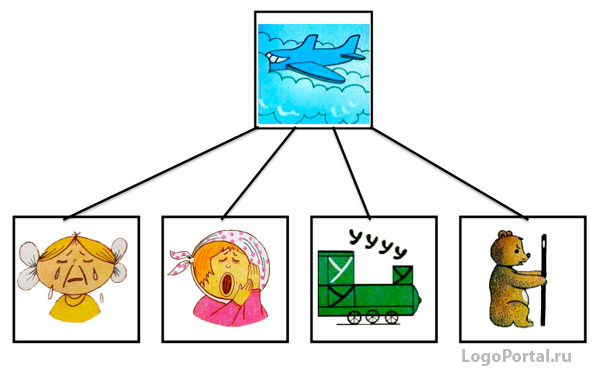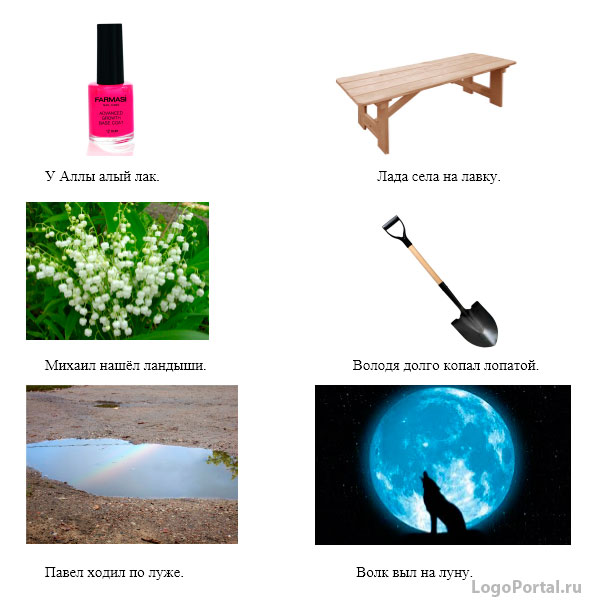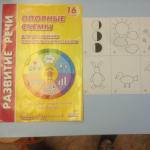Automation of sounds according to the method of M.F. Fomicheva
Annotation: The article is addressed to teachers-speech therapists of preschool institutions. It presents many years of experience in the automation of sounds at the initial stages of learning using sound symbols according to the method of M.F. Fomicheva. Colleagues are invited to adopt one of the ways of working with children who have impaired sound pronunciation. This technique is suitable for automating any staged sound.
Here is the sound. And very often, further work on automation comes down to only repeating syllables and words after a speech therapist, which leads to a boring lesson. Therefore, the proposed option for automating sound with drawing and simultaneously pronouncing a word will interest the child and diversify the learning process.
It is better if this work is carried out in a preschooler's workbook, since the worked out material with a speech therapist, in the future, parents will be able to repeat and consolidate at home.
Consider this technique on the example of the sound of L.
So, the sound is set. How to put it into speech?
I stage. Automation of sound in direct and reverse syllables
The child is introduced to the sound symbols of M.F. Fomicheva.
The plane is buzzing L-L-L
Anya cries A-A-A
Olya groans O-O-O
The train is humming
The bear growls S-S-S

Moving the pictures along the lines-paths, the child simultaneously pronounces straight syllables.
For example:
"The plane flies to Anya L-L-L-LA"
"The plane flies to Olya L-L-L-LO"
"The plane flies to the train L-L-L-LU"
"The plane flies to the teddy bear L-L-L-LY"
Then reverse syllables are worked out:
"Anna is going to the plane A-A-A-AL"
“Olya is going to the plane O-O-O-OL”
"The train is going to the plane U-U-U-UL"
"The bear is going to the plane Y-Y-Y-YL"
Stage II: Automation of sound in words
Consider this stage of work on the example of sound L. A speech therapist draws a picture and asks questions to the child. It is possible that the child himself draws or paints a picture.
Sample questions: “What am I drawing?”, “What am I painting over?”, “What happened?”, “What word will I write under the picture?” etc.
Thus, the child pronounces one word several times, the sound in the word is automated.
On the page in the child's notebook there are 6 pictures in this way:

If a speech therapist or a parent does not have artistic skills (and they are not the main ones here), then you can replace the drawings with ready-made pictures.
Words-pictures are typed in this way until the specialist is convinced that the sound is introduced into speech at the word level. As a rule, words with a sound at the beginning of a word are selected first (lamp, magnifying glass, boat, skis ..., then in the middle of a word with direct syllables (pigeons, baby, saw ...) and in the middle of a word with a confluence of consonants (shawl, ball, flag ... ), only then with a practiced sound at the end of the word (table, woodpecker, football ...).
Stage III: Automation of sound in a sentence
We need to go back to the first picture. The speech therapist invites the child to make a sentence together for this picture. For example: “Think of the name of the boy or girl, who sat on the bench?” If the child finds it difficult, then the adult offers options for names: Lada or Lena?
This is how phonemic awareness develops in parallel. The speech therapist offers the child to dictate a phrase, and he writes it down under the picture already drawn earlier. Here, in addition to sound automation, grammatical categories are worked out.
For example: "Lada sat on a bench."
It looks like this:

- Alla has scarlet lacquer.
- Lada sat down on the bench.
- Michael found lilies of the valley.
- Volodya dug for a long time with a shovel.
- Pavel walked in a puddle.
- The wolf howled at the moon.
Further stages of automation of sounds can take place in the classic version. This is the automation of sound in tongue twisters, poems, texts and independent speech.
I hope that this work experience will be useful to colleagues. Wish you luck!
Volskaya L.M.,
teacher speech therapist






